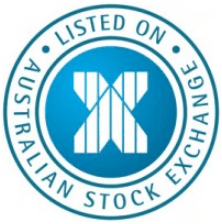
Chris Weston, Chief Market Strategist at IG Markets
After the overnight news flow and subsequent bullish price action in markets, traders find themselves with even fewer reasons to short developed market indices.
The fundamental picture has become more positive for the bulls, with the mix of a strong payrolls print, lower unemployment rate, while the forward looking sub-components of the services ISM expanded at a solid rate.Throw in the fairly benign hourly earnings and U-6 unemployment rate (the broadest measure of unemployment) which is still elevated at 12.1% and you are left with strong headline jobs print, but little reason for the market to feel the Fed will lose its ‘lower for longer’ stance.
This would then explain the limited sell-off in US treasuries, while USD/JPY was good for a 40 pip rally. The key date for inflation watchers will be July 31 and the Q2 Employee Cost Index (ECI) and an increase from the Q1 print of +0.3% would be welcomed by USD bulls. Coincidentally, this is the same day as the FOMC meeting, where the Fed will likely lower the pace of its QE program to $25 billion.
The ECB also gave enough clarity to push the EUR lower, but importantly bond traders would have taken inspiration at the fact that Mario Draghi suggested there would be no limitations on where the cheap funds – borrowed from European banks through the Targeted Long-Term Refinancing Operations (TLTRO) – were destined. This breathes new life into the carry trade and further buying of peripheral debt; hence why there was further buying of Spanish and Italian debt yesterday.
EUR/USD finds further selling pressure
If one of the key inputs into EUR/USD is the spread between Italian and Spanish bond yields over US treasuries, then one could argue the EUR could fall if the TLTRO funds make their way into the government bond market. You can also add the fact that European banks will have access to up to €1 trillion over the various operations and we should see a massive reversal in the size of the ECB’s balance sheet relative to that of other nations. This could be a huge headwind for the EUR and a natural positive for European equities, which will also find inspiration on the fact that banks may have to cut the pace of their de-leveraging to qualify for funds, which in turn could help growth.
Asian markets have certainly warmed to the overnight news, with the ASX 200 honing in on the year’s high of 5554, while the Nikkei is looking to break out and print a higher high. The ASX 200 has had a strong week with the benefit of better sentiment towards China and signs the central bank could become more accommodative in the coming months. Naturally, any stock that has a yield of any significance is doing nicely again today.
Glenn Stevens has planted a rate cut seed
Glenn Stevens seems to have done enough to plant doubt among the speculators that rates could be cut in the future. With record low volatility, the attraction of Australia’s yield advantage is still there, but the 10-year Australian government bond now only commands a 90 basis point premium over US treasuries, which is the lowest since 2006.Traders will now be watching out for Q2 CPI on July 23 and the Statement of Monetary Policy on 8 August. The swaps market is currently pricing in just three basis points of cuts by September, but I suspect that could be much larger if we see weakness in these events.
While it seems a huge task to see the 90 basis point premium become a discount, if we do see US rates move higher in the next six months and a rate cut from the RBA this year, this phenomenon could materialise, with AUD/USD likely to really roll over. I continue to like GBP/AUD higher.
European markets should open on a flat note, and with limited data flow and the US offline it could be a fairly flat day of trade. This is a market which is in constant adjustment, trying to work out what exactly will stop the trend higher in developed market equities.
US earnings take centre stage next week and the prospect of top-line earnings growth and better signs of capital expenditure suggest that earnings season shouldn’t be the catalyst for a sell-off. Wage growth could actually be that catalyst, as it would signify a red flag to traders that rates might not stay lower for longer. At the end of the day many have tried to short developed market indices but it’s worth remembering that for now the trend is higher and we haven’t seen a 5% pullback in the S&P 500 futures in 106 trading sessions.